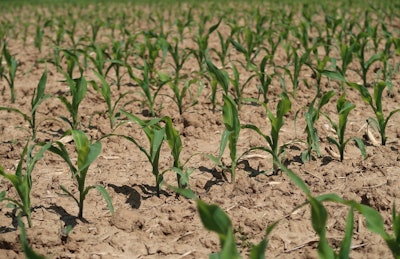
Intensifying drought conditions are rapidly depleting soil moisture and damaging crops across key agricultural regions of the United States, according to the latest U.S. Drought Monitor report.
The report, produced through a partnership between the National Drought Mitigation Center, USDA and NOAA, shows particularly concerning conditions developing with farmers in Tennessee and Arkansas experiencing the most dramatic deterioration.
“Short or very short topsoil moisture covered 60 percent of Tennessee and 80 percent of Arkansas, up from 18 and 39 percent, respectively, in early July,” the report states. This rapid moisture depletion has directly impacted crop health, with the proportion of Tennessee’s cotton crop in poor or very poor condition more than doubling from 12 percent to 26 percent in just one month.
Similar stress is spreading across the Northeast, where two-thirds of Maine’s topsoil now lacks adequate moisture, a dramatic increase from just 3 percent five weeks ago. In Vermont, three-quarters of farmland is experiencing moisture shortages, compared to 18 percent in early July.
Western regions are facing equally severe challenges. In Colorado, the percentage of corn rated poor or very poor jumped from 1 percent to 19 percent since early July. Nebraska farmers have seen one-third of their oat crop deteriorate to poor or very poor condition, up from 5 percent.
Livestock producers are particularly vulnerable in drought-stricken regions. The report indicates that nearly half of Utah’s rangelands are in poor or very poor condition, while Washington’s spring wheat crop has deteriorated dramatically, with over half now rated poor or very poor compared to 17 percent in early July.
Some areas received relief through significant rainfall, particularly in the Carolinas, eastern Georgia, and parts of Florida, where abnormally dry conditions have largely ended. Parts of northern Minnesota and northwestern Illinois also saw improvement.
The outlook for the next 5-10 days offers limited relief for most agricultural regions, with above-normal temperatures expected across much of the country and precipitation forecasts uncertain for many farming areas.


















